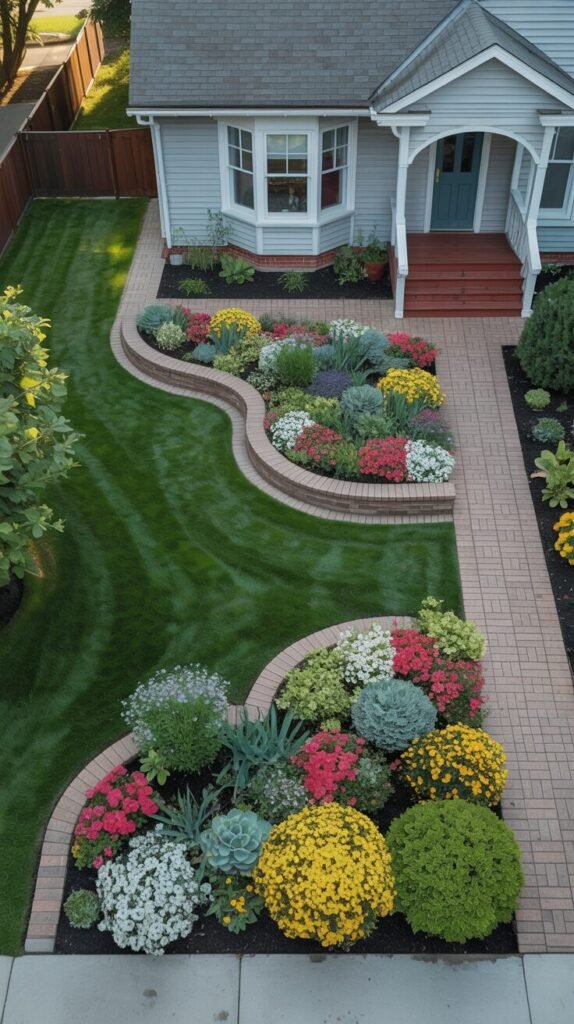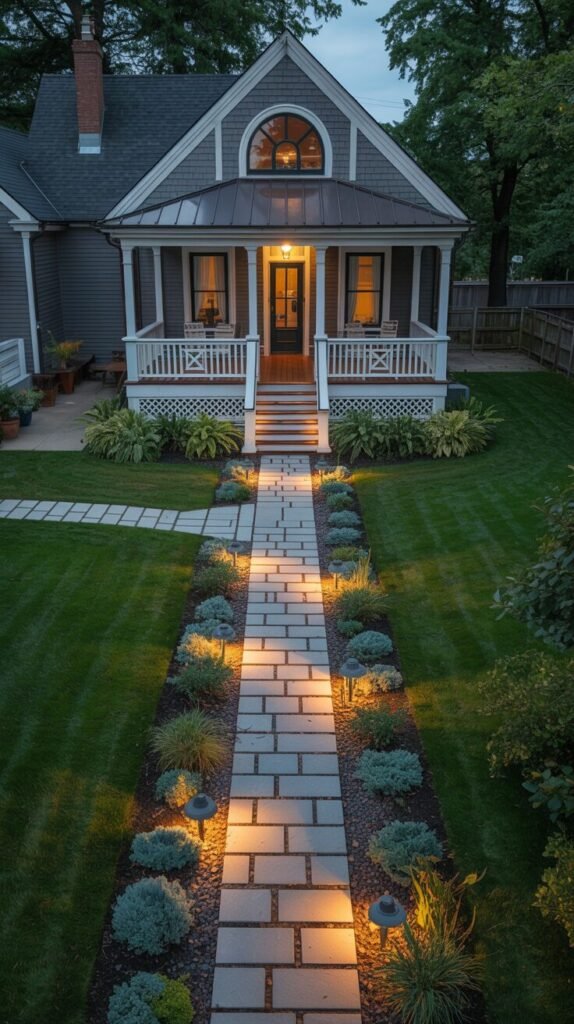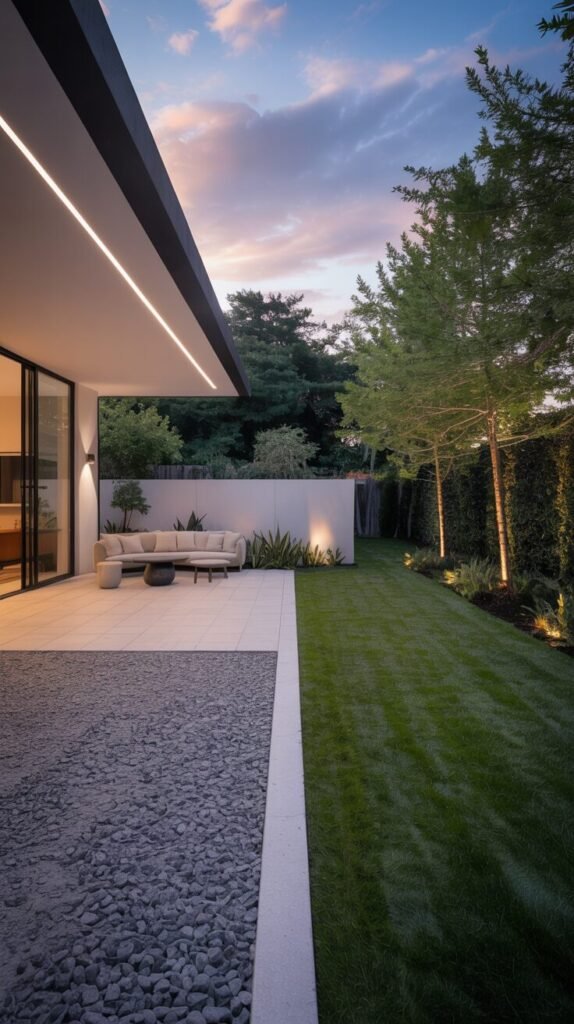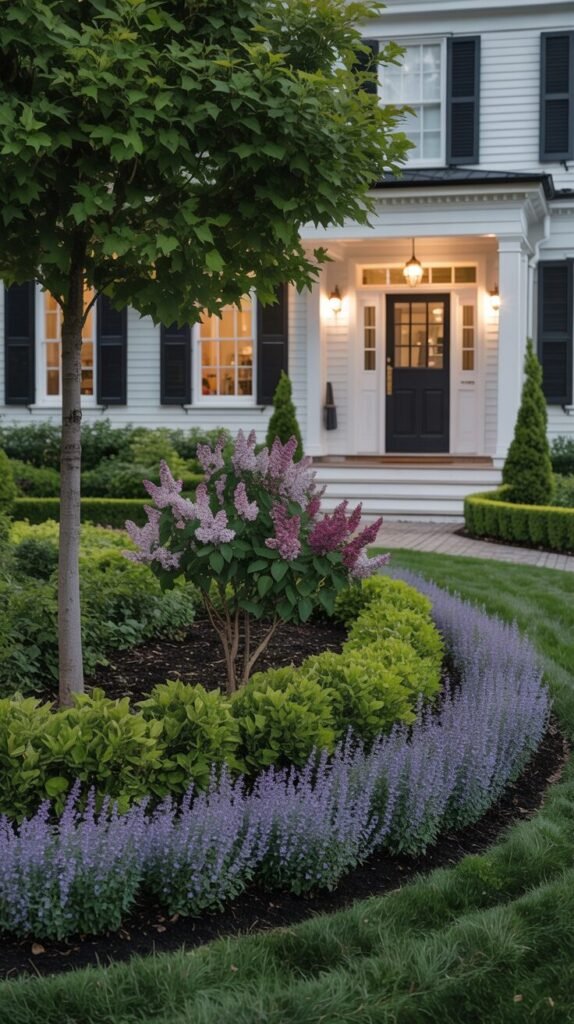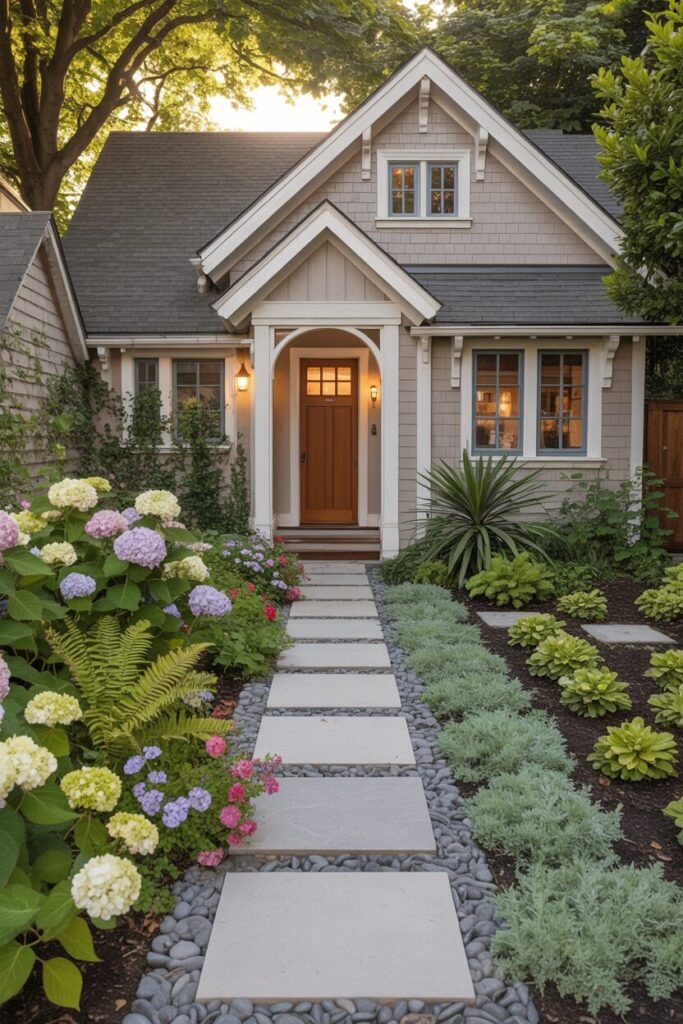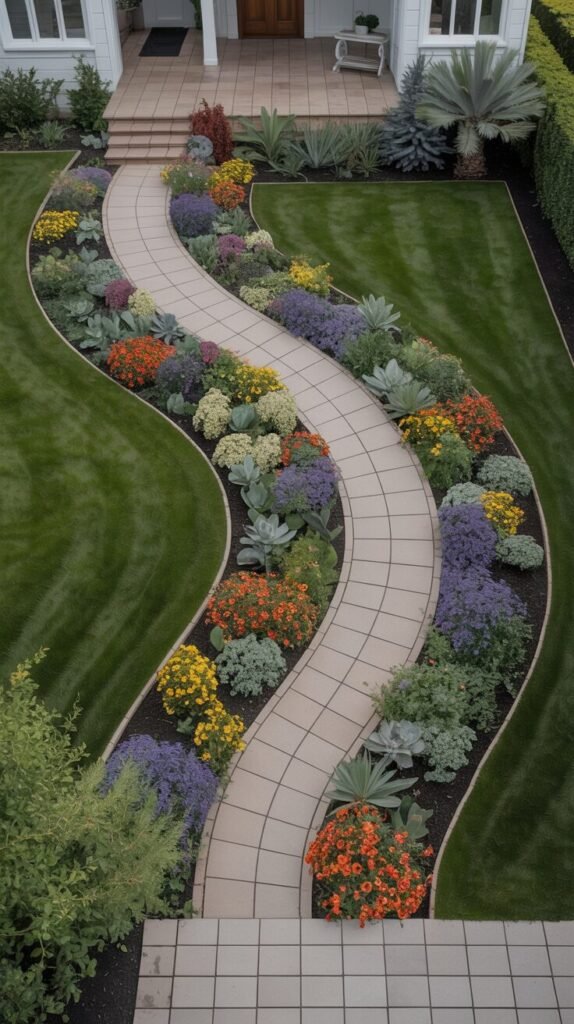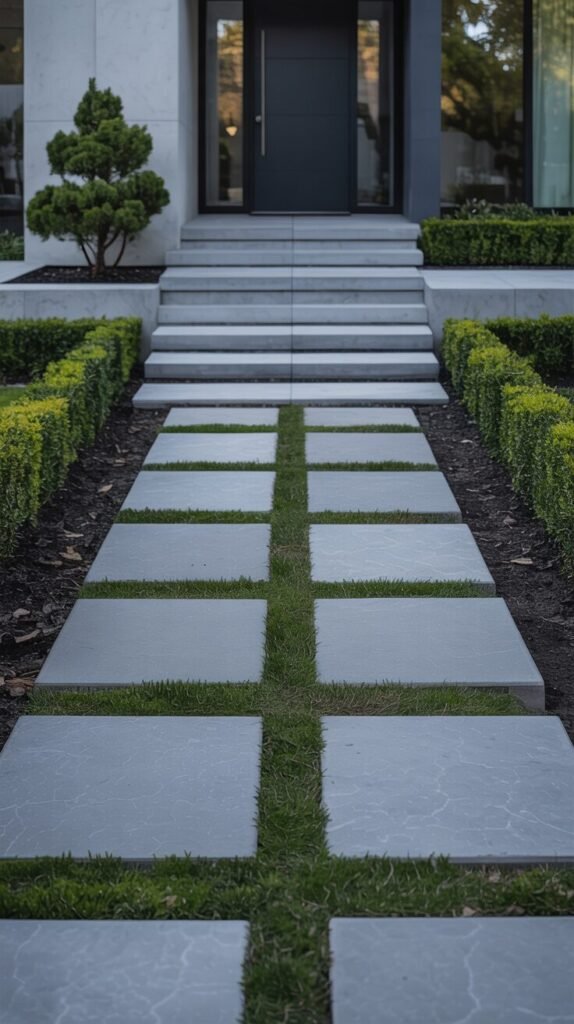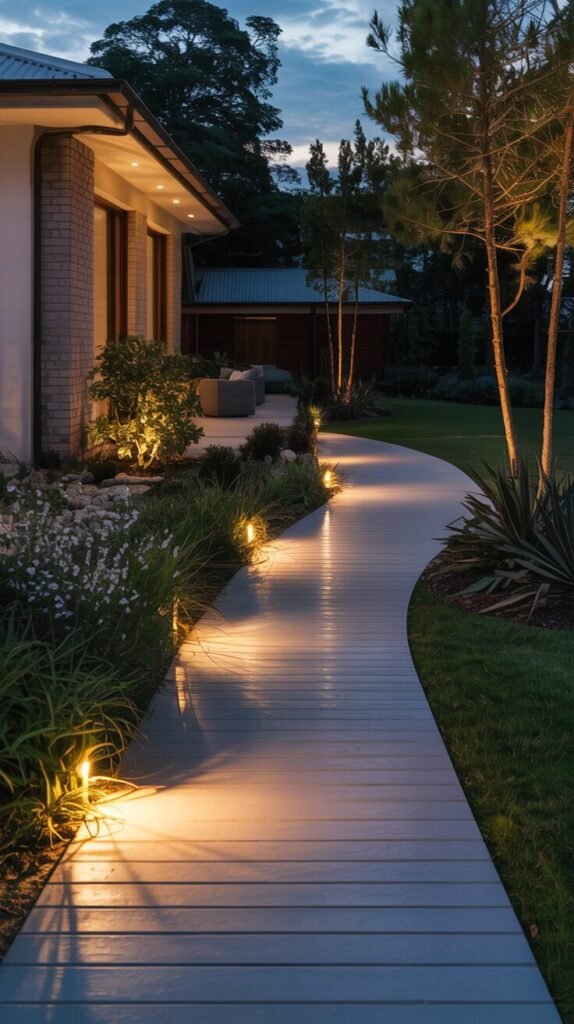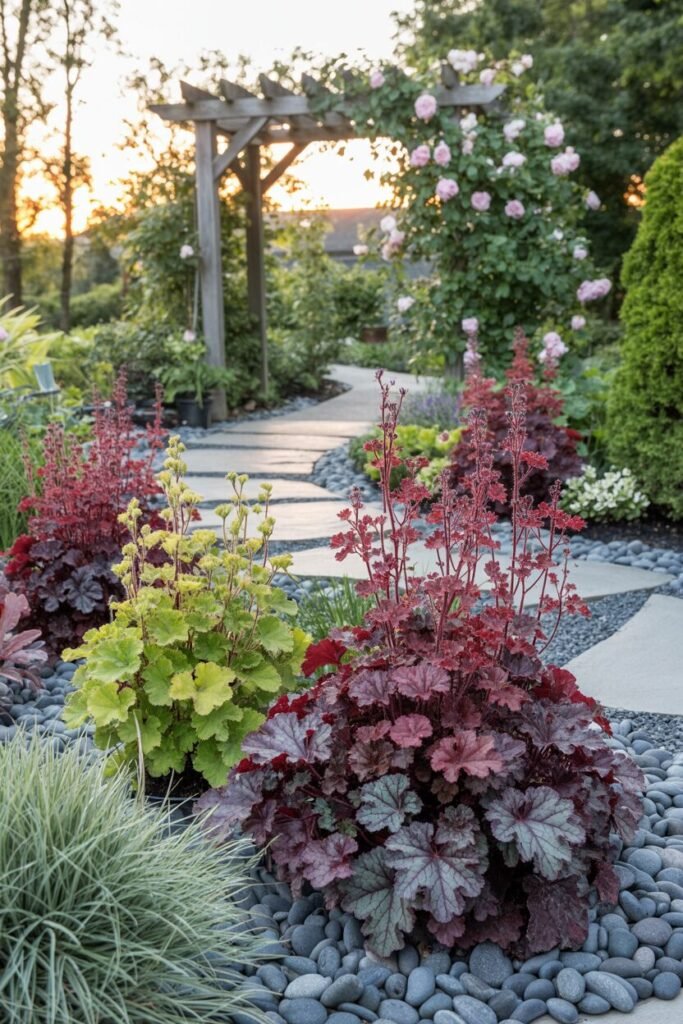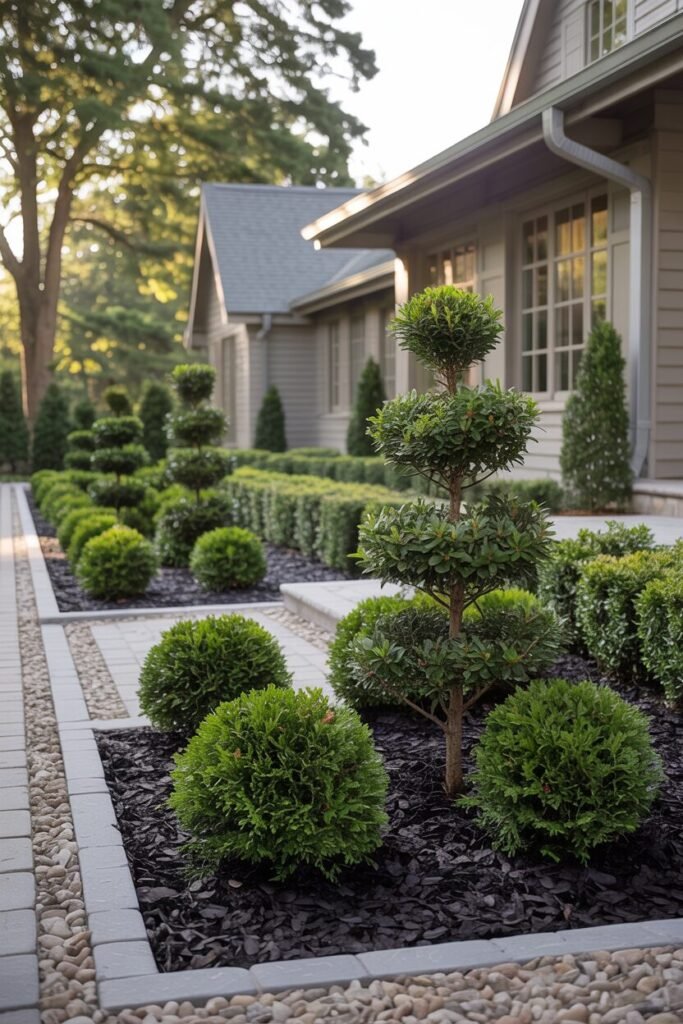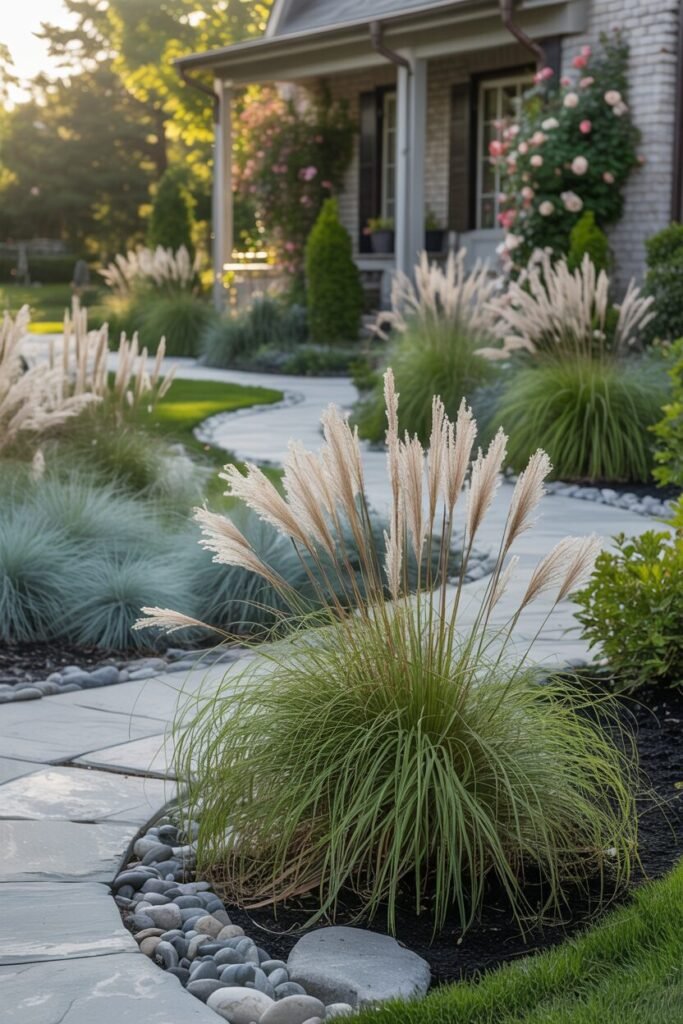The Golden Ratio and Front Yard Design: A Foolproof Layout Trick That Works Every Time
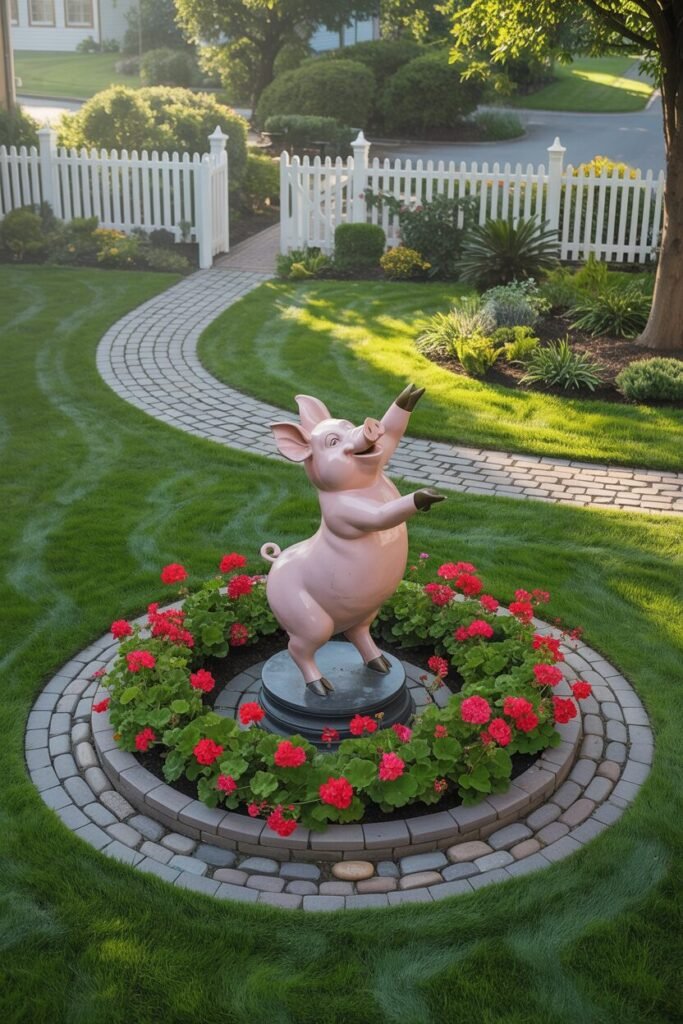
Ever walked down past a front lawn and said to yourself, “Now that’s a vibe,” even though you couldn’t quite place why? We’re guessing our last dollar it wasn’t chance. We’re guessing it was deliberate with a secret ingredient: proportion. And not the usual proportion, no way. We’re discussing the Golden Ratio—the classical design standard that appears on everything from the mundane seashell to those hideously overwrought Greek temples. It’s essentially the universe’s favorite number.
Now, for my math failed friends (no sarcasm, we were too busy tonging), the Golden Ratio is approximately 1.618 to 1. It’s the universe’s own Instagram aesthetic. Our brains, bless them for their cotton socks, tend to perceive this as “harmonious.” Designers and artists used it centuries ago, in an effort to design visual balance, and surprise, surprise: it works. When applied to your outdoor area.
In real-life landscape design, we apply this ratio as our reliable companion. It can help us determine the width of a bed based on its length, where we place that behemoth of an ugly garden gnome (ahem, we say “focal point”), and even how we should layer foliage so it doesn’t resemble a battle of tallests. When you scatter this fluffy math around your front yard, what you’ve got isn’t mere prettiness; it’s like a fuzzy warm hug for your eyes.
It’s not about creating some sort of mythic perfection. It’s about getting flow, rhythm, and that distinctive sense that your house and its little piece of ground were always supposed to be. Like just-right paired wine and cheese, only more grit.
How to Apply the Golden Ratio to Front Yard Elements
By intentionally sprinkling this magical 1.618 fairy dust on specific things—such as your garden beds, those stairs you’re always tripping over, and whatever you want people to finally see at last—we’ll have a design that shouts “effortless beauty.” Below, we’re about to serve up all the tea on just how to use this power in every design decision.
Design Garden Beds in 1:1.6 Proportions
You get that feeling when a garden bed just. fits? Like it was meant to exist? More often than not, its shape is secretly an adherent of the Golden Ratio. Sneaky, I know.
In the photograph above, you can see a garden bed that’s essentially a supermodel of proportions. It’s done on a 1:1.6 width-to-length ratio. See how stunningly it curves across the front yard? If you look closely, you can notice that the depth (the part nearest to your walkway) is roughly 1 unit, and its beautiful flowing length along your lawn is roughly 1.6 units. This ingenious mathematics magic forces the bed to neither resemble a stunted brick nor an extended noodle. It is just. aesthetically pleasing.
The Golden Ratio used here isn’t window dressing, but to create the impression of balance and totally planned. It is a considerate doorman, leading your eye away from the path to the border of the garden without getting you yelled at. The payoff? A room that shouts “zen garden” and “professional designer” even if you constructed it yourself with your own two (slightly dirty) hands.
Style tip: When you sketch your own flower of beauty, draw a rectangle or an arc with the longer edge 1.6 times the shorter one. Then get at it with some curves so it won’t look quite so much like geometry homework and more like, you know, nature.
Proportion is the unsung, low-key hero of garden design. Yes, exactly, and the rest of it all sort of. falls into place. It is like discovering that missing sock; unadulterated joy.
Choose Path Widths Based on Golden Ratio to Length
Paths are a little more than a yellow brick road to your front door; they’re your lawn’s visual “come on in!” welcome. And when you use them by the Golden Ratio, a path is less about shape and more about sensationally smooth art.
Check out that photo up there. See where that front yard sidewalk is? It’s a blessing and a curse for this guideline. The path’s width is nicely traded to its overall length by that reliable 1:1.6 ratio. That extended, good-looking sidewalk lengthens your eye straight on the front porch, and the width isn’t strolling high wire or on a runway. It’s this nuanced balance that makes the entire rigmarole look so stinkin’ cohesive.
And what does it do to your own backyard realm? If you’re having a new walkway put in, try this little trick: measure your dream width—a comfortable 4 feet or so, say—divide by 1.6. Ta-da! You have your dream path length of perhaps about 6.5 feet even before you even put on a turn or an end. This spacing feels. right. It’s intuitive, as if your feet know where they’re going.
Style hack: Don’t make the light fall behind! Employ it along the way to create more rhythm. Up-lighting provides a more distinct appearance to your path design when your path design is receiving its Golden Ratio dance in the middle. Because nothing shouts “we planned it” more than lit sidewalks.
Divide Lawn and Hardscape Using 1/3 and 2/3 Balance
One of the biggest newbie errors with front yard landscaping is attempting to get the entire endeavor symmetrical. But the thing there, people, is that symmetry and balance are not necessarily fraternal twins; balance really more of a proportionary concept. And that, people, is when the great 1/3 and 2/3 rule rears its head.
In the photo above, you can kinda sense the effort that went into cleaning out the room of everything. One-third of the yard is devoted to that new shiny patio and gravel. And what about the other two-thirds? Reserved particularly for the green, soft, flowing slab of lawn and plantings. This peaceful “imbalance” is not by chance; it’s design! It causes movement, creates a distinct hierarchy, and gives everything room to breathe that it so badly requires without ever a sense of instability.
Having that ratio in your own yard can be your be-all and end-all when deciding how much grass to yield to patios, walkways, or gravel parking areas. It prevents your lawn from looking like it was shoved into a broom closet—or, worse yet, like it was an afterthought scrawled on a cocktail napkin.
Style advice: Be a landscape architect. Think of your front yard as a huge, lovely rectangle. Now think of (or better yet, if you’re that inspired) dividing it into three vertical strips. Reserve one for your hardscape, and leave the other two for you to fill in with lovely greens. It’s as if you’re providing your yard with an excellent stage for its star turns.
Layer Plant Heights in Golden Steps
The prettiest application of the Golden Ratio on your front yard is perhaps layering your plants according to their heights. Rather than having your bushes lined up like a sergeant major, try layering your landscaping into deferential tiers of heights—what we fondly refer to as Golden Steps.
In the photo above, that is shouting it from the rooftops, literally. Plant spacing is all about a rhythm so natural it borders on singing: low lilac on the front, mid-green in the middle, and then lilac bushes higher up and a tree in the rear. With each step up towards about, it’s 1.6 times bigger than the previous one, for a depth effect without all of it being like a cliff.
This layering is not something to grasp in the guise of a facade; it gives form, it’s evocative, and a lovely sweep of silkeness all at once to your scenery. It’s a soft-spoken whisper, slowly drawing your eye along from lawn border to front door, a slow build to a crescendo that peaks tension.
Secret style secret: When you’re constructing a fresh bed, begin in front with your shortest plants. Then, choose your mid-layer to be around 1.5 to 1.6 times taller. Wash and repeat! The finish is warm, earthy depth—never, never flat. Unless, that is, you’re attempting that “rug” look, in which case, go for it.”.
Frame the Front Door With Unequal Planting Zones
A front door that is enclosed is somehow irresistibly intriguing, but in a “my parents are forcing me to take this photo” sort of way. Rather than aiming for spotty, lifeless symmetry, attempt to leverage off-center planting beds using the Golden Ratio. It’s an extremely minute variation that unleashes a titanic visual impact.
Study the photograph closely. Notice how one of the edges of the walk that is adjacent to the entrance door is richer, fuller, plusher with big hydrangeas, frolicky fern textures, and splishy bold flowers? Have a look over on the other side now—it’s lessened, refined, with low-profile plants only and a peek at pebble hardscape. It wasn’t by chance, cheerful or otherwise; it’s an intentional, balanced use of harmony.
By loading up one side with about 1.6 times more visual weight—height, intense color, or plain density—we’re using the Golden Ratio to a most delicate way of guiding the eye to the door without ever attempting anything stiff and forced into a box. It’s exquisitely choreographed dance, if I may say so, with a flying rhythm well within reach.
Style tip: Choose your “golden side” according to sun exposure or, let’s be real, wherever you’d like to look dramatic. Keep the other side light and breezy so it can get some much-needed oxygen. Because even your garden has to break a leg.
Shape Curved Beds Using Golden Arcs
Curves don’t have to be all bluster; they’re an intelligent means of creating flow, gently directing the eye, and developing an in-tune emotional rhythm in your front yard. And when curves are engineered based on the math of the Golden Ratio, they’re not merely an ornament – they signify something;.
Do take a glance at the photograph above and notice how the garden beds echo the radius of the path in a movement that’s literally a love affair with the Golden Spiral—that classic, natural curve which you can spot everywhere from, ah yes, seashells, to those sunflower flowers which wind in spirals of beauty. The curves are not staccato and jerky like a child might create. Instead of blasting around the curves at breakneck pace, they’re all coming in series gradually, making a relaxing, embracing rhythm transport you to the entrance without putting your peepers through wringer time.
And how’s that done? The curve opens and closes on straight in exactly the right tempo, getting darn close to that holy grail 1:1.6 ratio that makes our minds sigh with relief, “Ah, this is just right.” Optical ASMR, that’s what it’s like.
Style hack: While planning out those lovely curved beds, grab a garden hose or a good rope and practice drawing out a spiral line. Then plant within that line, having your proportions become more narrow at the beginning and broader and broader as they move towards your focal point.
Design Entry Steps or Paver Grids With Golden Spacing
Front steps and paver grids are not hunks of stone; they’re an empty palette just waiting to be decorated by balance, proportion, and rhythm. And when you lay them out with the Golden Ratio, they’re design tools that hone the whole “feel” of your front yard.
Gaze upon that nifty, modern paver design in the photo above and feast your eyes on those meticulously laid out front entry steps. The pavers are themselves arrayed in a lovely symmetrical design, but it’s between them that the magic takes place. The spaces aren’t uncomfortably small and tight, nor laughingly huge; they’re in that cheerfully open sweet spot where each gap is roughly 1.6 times larger than the paver’s width, shouting the first several words of the Golden Ratio mantra.
This nifty ratio allows for a lot of breathing room for our pavers without sacrificing clean, neat passage from sidewalk to front door. What’s the benefit? Tranquil, greenly still space that has a natural sense of spaciousness and soft, sweet intention.
Style hack: To achieve this hipster style, measure the width of the pavers and then lay them all out at that magic ratio 1:1.6. Plant those hipster gaps in grass, gravel, or even a scorching black river rock to break up the hard geometry.
Use Golden Triangles to Anchor Key Elements
One of the most uncomplicated, yet most beautiful, methods of imposing structure and balance to your front yard garden is placing your features in triangular locations. And if that triangle is in sacred relations of the Golden Section, the resulting design is so mathematically best placed, it’s a wee bit spooky.
Study very carefully the design in the above photo. And note the slender tree alone on the side. And that silly hunched bench wedged in between by a reflecting pool. And finally, a thoughtful low group of plants crowns the third corner. The three co-exist at an unstudied, natural triangle firming up the space without encasing it or stiffening it. It is not straight-ruled, and trust me, it doesn’t have to be. Those two between those two extremes repeats that beautiful 1:1.6 rhythm quietly, and for that reason the entire scene feels so naturally in place.
It’s an ace card out front if you just aren’t in the mood to fool around with the constraints of strict symmetry but you do need that warm sense of order and orderliness.
Hack style: In master play design mode, select three items that don’t match—a stately tree, a peaceful bench, and a zany, goofy plant with some pizzazz. And then put them around at about asymmetrical places. Have your path or those nice planting curves be the connectors that bind them, and voilà! You’ve created yourself a Golden Triangle. You’re a design wizard now!.
Group Outdoor Lighting Using Golden Spacing
Great outdoor lighting isn’t merely a matter of switching on your shrubs so you don’t trip over them in the middle of the night; it’s establishing rhythm. And of the most seriously underused things you can do to make your outdoor lighting hum is spacing the lights based on the Golden Ratio.
Observe the photo above, and see that the light along the line isn’t plodding in step, every 5 feet or every 10 feet like a good little soldier. No. The lights are clusterd in clumps nicely along spacings that become larger and larger—some clusterd together near each other, some welcoming, all the way down the line. This is a natural rhythm that’s close to poetry. It is like a quotation of the Fibonacci sequence (5ft, 8ft, 13ft…) which, surprise surprise, is constructed with the Golden Ratio in its very existence.
And by not crossing over, you’re also avoiding the risk of that miserable formal “airport runway” appearance which evenly spaced light occasionally creates. Instead, you’ll be creating points of interest and points of hesitation—like the well-placed beat in your favorite song. Your eye will stop along the way, elegantly led by the light, but never, ever in angry procession. It’s a dance, not a procession.
Style hack: Start with the first light at your front door (about 5ft). Then, step the increments down—8ft, then 13ft, and so on. That small variation isn’t arbitrary; it maintains the look cohesive as a whole, responds more sensibly, and a heck of a lot less cookie-cutter hardware store-y.
Let Your Landscape Breathe: Design With Natural Balance
Good design is not necessarily about adding more junk in. Not by any stretch. It’s adding stuff in there with thought. When you’re at the place where you’re on the path of the gold, your landscape doesn’t feel like it was spilling family photo size on you anymore, but something, well, really very much in bloom.
Space breathes, architecture shifts, and each and every object—a beautiful tree or a rock—precisely where it should be in flawless awareness. That, folks, is more than excellent design. That’s the unadulterated peak of nature balance. And, frankly, a tad presumptuous.

